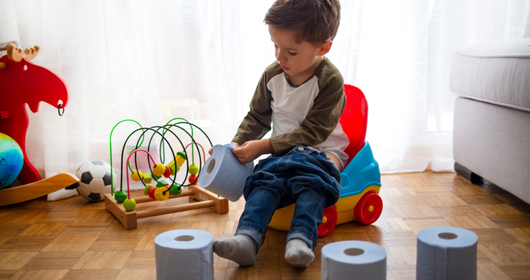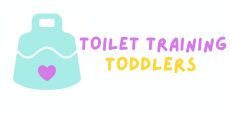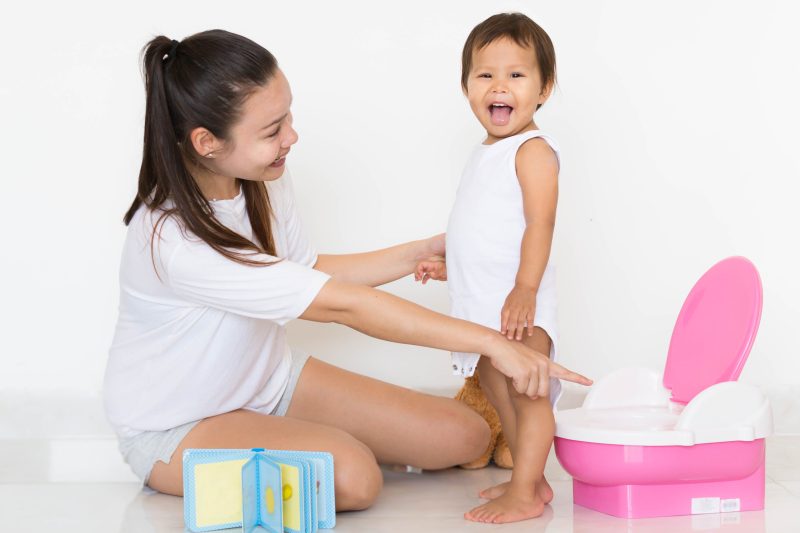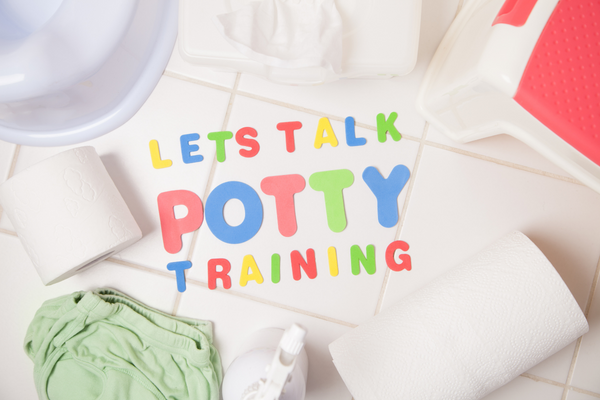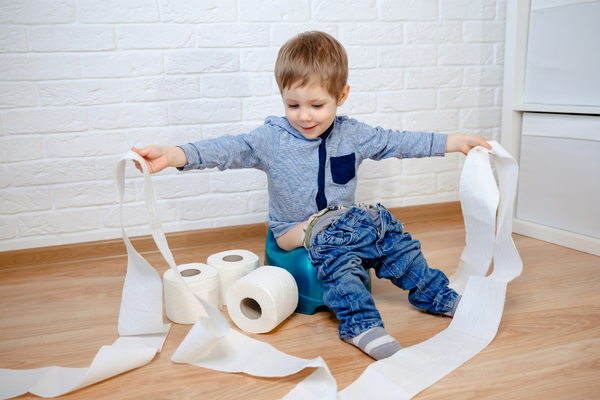Can you really ditch the diapers after only 3 days?
As if the terrible twos weren’t bad enough, you also have potty training to contend with. Few things strike fear into the hearts of parents, like the idea of a diaperless toddler. But that is what the 3-day potty training method is all about.
Some say it’s the best way to say goodbye to diapers, while others worry about the emotional impact it has on the child. Either way, there’s no disputing that potty training in some form is essential, so it’s really about finding a method that works for your family.
Let’s dive into the 3-day potty training method so you can decide if this bare-bum approach is right for you.
Disclaimer: This blog post contains affiliate links . If you use them, we might be rewarded credit or a commission of the sale. Please note that we only recommend tools that we personally use and love and we always have our readers’ best interest at heart.
What is 3-Day Potty Training About?
A cold turkey, all-in approach to potty training is not new. But Lora Jensen’s book has seen a resurgence of parents locking themselves in the house with a half-naked toddler as they try to kick the diaper habit.
This approach is about helping your child recognize the signs of needing to use the toilet. It uses positive reinforcement and takes patience and consistency from parents. Lots of patience!
It is an intense 3 days of dedicating your time to your toddler as they let it all hang out while learning about their bodies. You can train your child to use the toilet through gentle reminders, encouragement, and shame-free interactions.
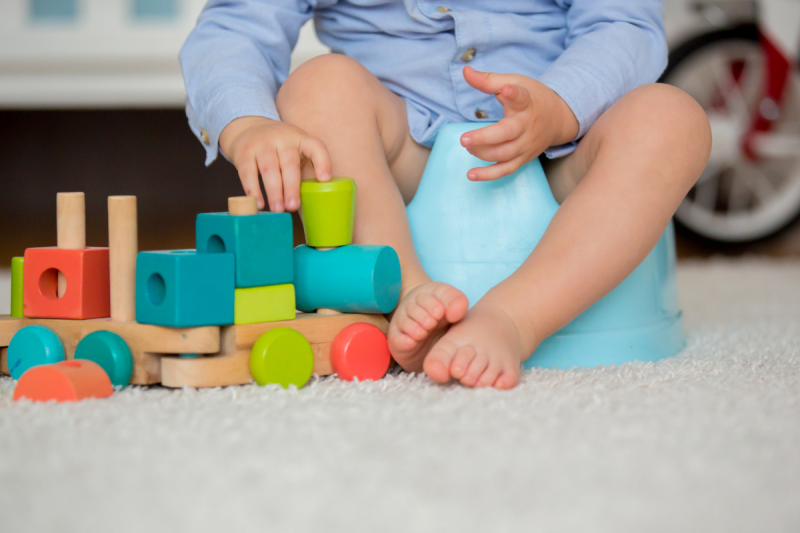
Is This the Right Method for Your Family?
When choosing the best potty training method, you need to consider the type of child you have. The 3-day approach might work for some children and not for others.
Pros
- It helps you jump-start the potty training process
- It saves you time and frustration
- You get to spend some quality time with your toddler
Cons
- It can be draining and emotional for parents and kids
- It’s messy!
- It can create anxiety around going to the toilet
Controversy
People have strong feelings about potty training, and the pressure that society adds is unhelpful. The “normal” age for potty training is about two, and boy, do you feel the heat if your child hasn’t checked that box on schedule.
But potty training is not a science.
Your child might need more time, and forcing the issue could have serious consequences. When your child feels anxious about using the toilet, they could start holding things in. That means UTIs and constipation.
If your child isn’t ready to potty train, then you could be setting unrealistic expectations for them and for yourself. This could lead to a situation where you both feel frustrated, upset, and anxious.
How Do You Know When Your Child is Ready to Potty Train?
Your child’s readiness to potty train is a key factor in the success of the 3-day potty training method. The timeline for this looks different for each child, but there are a few common signs that let you know your child is capable of potty training.
Here are the 4 C’s to potty training readiness:
Communication
They can communicate their needs. This doesn’t have to be verbal communication, but they should be able to let you know when they need to pee or poop.
Comprehension
Your toddler can understand and follow directions. Explaining that pee and poop need to go in the toilet is pointless if they can’t understand what you are saying.
Curiosity
They have shown interest in toilet behavior with other family members. As a mom, your child has probably spent an insane amount of time in the bathroom with you, and they might now be curious about what you actually do in there (apart from entertaining them, of course!).
Comfort
Your toddler might not like having a dirty diaper and will tell you, or worse, take it off. This is horrifying for any parent but is a good indication that they are ready to try potty training.
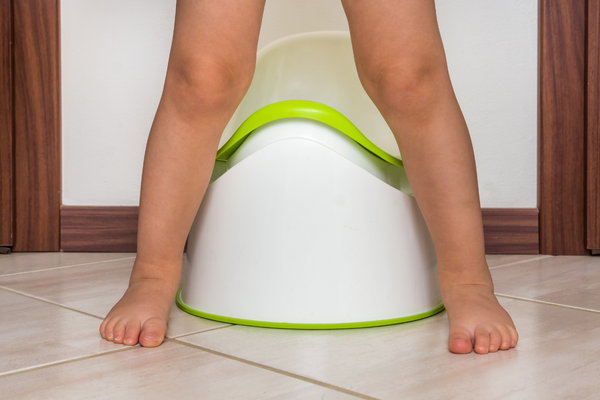
How You Can Actually Potty Train Your Child in 3 Days
Getting Prepped
There are a few things to do to prepare for the 3-day siege as you wage war on diapers.
- Stock up on food, drinks, snacks, and freezer meals
- Fold those piles of laundry (yes, you know the ones) and get the washing up to date. You are going to be washing a lot over the next 3 days
- Have games and activities on hand
- Talk to your toddler about the plan and let them choose their own underwear and t-shirts for the potty training adventure
- Have a potty and toddler toilet seat
Day 1
Take off your child’s diaper as soon as they wake up. It is best for them to be bare-bummed for the first day, which is where the oversized t-shirts come in. Keep your daily routine; just encourage them to drink more liquids.
Take your child to the toilet every 15 minutes and gently remind them about going to the toilet if they have had a lot to drink. This is really important, which is why you should stay at home during this process.
Also, accidents are inevitable, so be prepared. Roll up any special carpets and try and stick to areas that can handle an accident. It’s vital that you remain calm during these times and not shame your child. Just remind them that pee and poop go in the toilet as you clean up the mess.
Day 2 and 3
Follow the same pattern as Day 1, but now you can add underwear. Day 2 usually requires more grit, and emotions may be high. This is normal, and you should start to see the light by Day 3.
At this stage, your child is more aware of their body and the feelings they have when they need to pee or poop. If your child needs an extra day, then that is OK too!
So, Is This Method For You?
Maybe this method sounds like a great fit for your family, or perhaps the intensity doesn’t sit well with you. However you approach potty training, the most important thing is to eliminate stress for you and your child.
If the 3-day method has you saying goodbye to diapers, then fantastic! But if it doesn’t, then wait a few months. There is little research on the best way to potty train, so don’t get worked up about it.
Instead, take cues from your toddler as you navigate the trials and triumphs of using the toilet.
